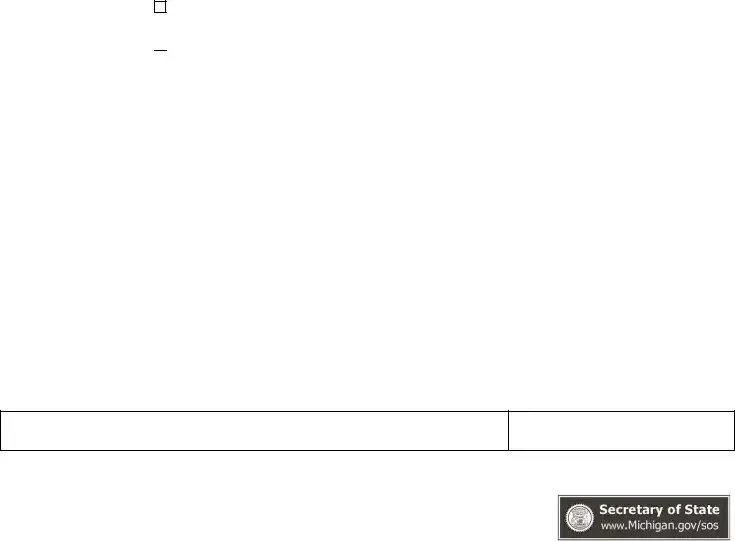Filling out forms can sometimes feel like navigating a maze, and the Michigan MV-74 form for Amateur Radio Operator Call Letter License Plates is no exception. A few common slip-ups can turn this straightforward process into a complicated one. Let's walk through six mistakes people often make, so you can avoid them.
First and foremost, a missing signature is a surprisingly common oversight. This form, like many others, requires a personal signature to validate the information provided. Despite its importance being mentioned at the bottom of the form, it's easy to overlook. Applicants should double-check that they haven't skipped this crucial step, attesting that all information is correct and acknowledging the condition regarding the status of their FCC license.
Another notable error involves inaccurately providing the Amateur Radio Operator (ARO) Call Letters. These letters are unique identifiers and must match the FCC-issued license exactly. Mismatches here can lead to processing delays or even outright denial of the application. It's critical to ensure that these letters are transcribed onto the form with precision.
Incorrect vehicle information is yet another pitfall. The MV-74 form requires specifics about the vehicle, including the year, make, and Vehicle Identification Number (VIN). Given that the license plate is tied not just to the operator but also to a specific vehicle, any discrepancies in these details can be problematic. Thorough review and verification against the vehicle's official documents can help prevent these errors.
Often, applicants forget to include the necessary supplementary documents. Besides the completed form, a copy of the FCC-issued Amateur Radio Operator license and proof of Michigan no-fault insurance are mandatory. Neglecting to enclose these items with the application packet will stall the process, as the Department of State cannot issue the plate without verifying eligibility and compliance with Michigan law.
Choosing the wrong plate type and not calculating fees correctly is another common mistake. The form gives two options: Standard Plate and Graphic Plate, each with a different service fee in addition to the regular registration fee. Sometimes, applicants either tick the wrong box or miscalculate the total fees, including the service charge and registration fees. This oversight can delay issuance. Applicants should ensure they select the correct plate option and tally up their fees accurately, keeping in mind they can use a current license plate on the same vehicle as credit toward the fee.
Last but not least, the payment method can be a stumbling block. The form clearly specifies that a check or money order payable to the "State of Michigan" must accompany the application. However, applicants sometimes fail to include the payment or make it out incorrectly. Ensuring that the payment is properly addressed and included with the application packet is vital for a smooth process.
In summary, while the Michigan MV-74 form may seem straightforward, attention to detail is key. By avoiding these common mistakes—ensuring the signature, ARO Call Letters, and vehicle information are correct; including all necessary documents; correctly identifying the plate and fee; and properly including payment—applicants can enjoy a hassle-free application experience for their Amateur Radio Operator License Plate.


